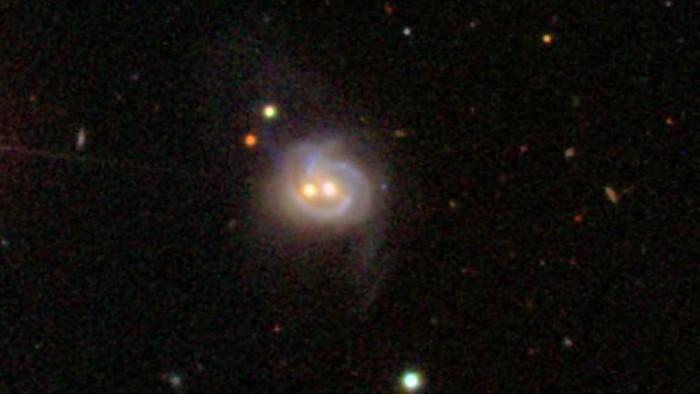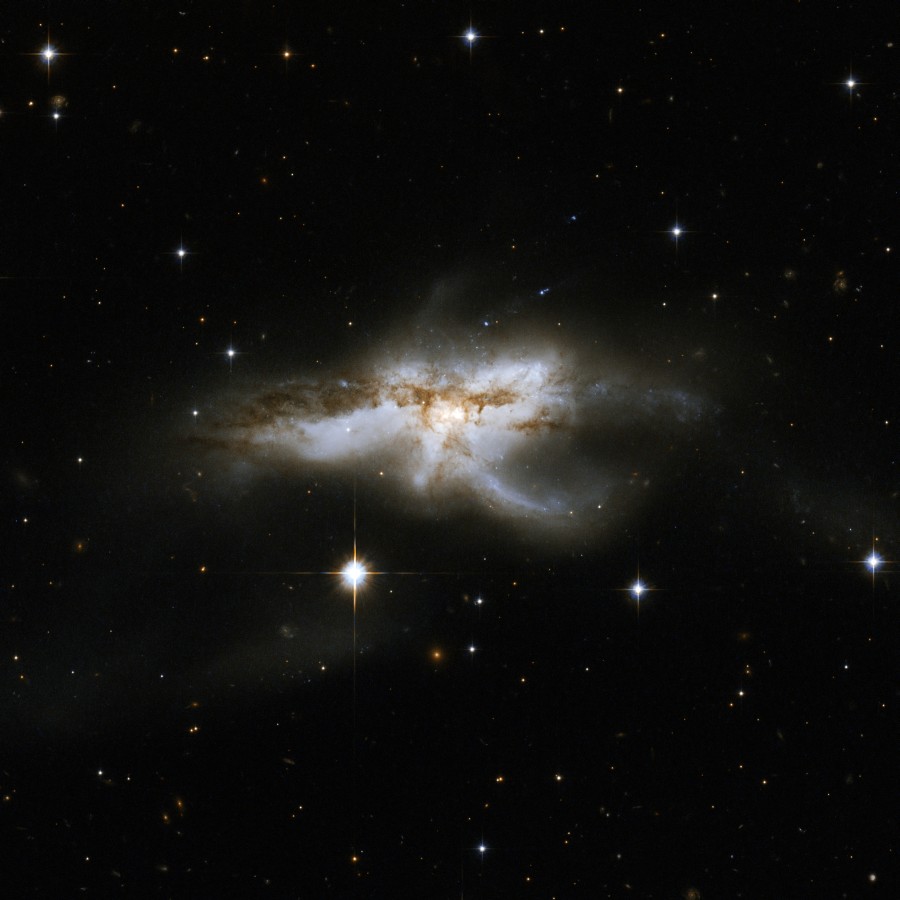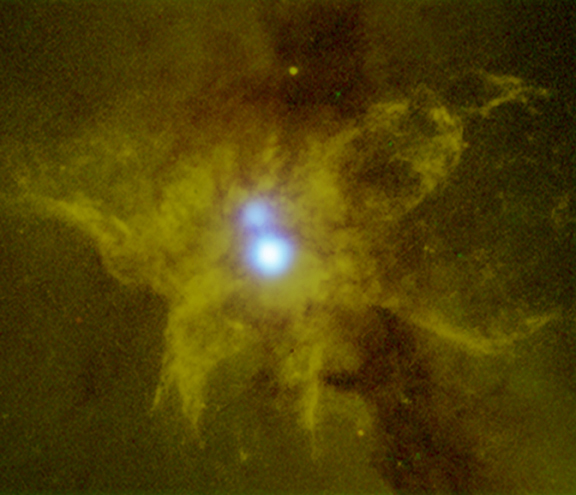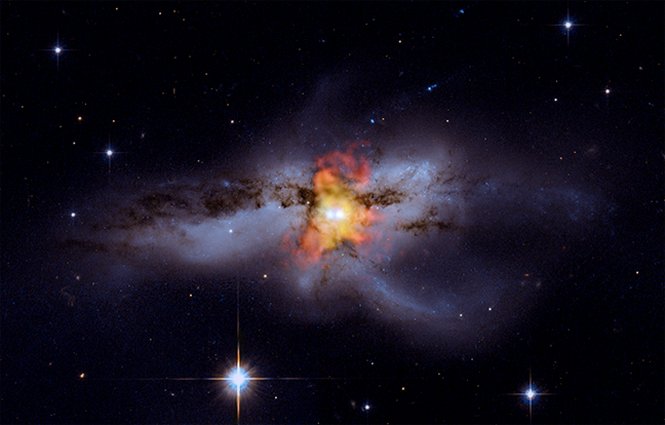Added 1 new A* page:"I typically avoid science fiction, but the art's disarmingly unique, the writing too sharp. If even light can't escape the pull of A*, what a fool I was to believe that I could."
-- Anonymous |
An alert reader on Facebook pointed out a new Swift/Chandra discovery of a relatively nearby galaxy with two supermassive black holes merging at the center, the result of two galaxies colliding.
It's been known for a while that the galaxy Markarian 739, or NGC 3758, which is about 425 million light years away, had two galactic cores, one of which was an active galactic nucleus, where a supermassive black hole was actively swallowing vast amounts of material. But it wasn't until Chandra's X-ray vision took a good hard look at it that scientists realized that the second core was also active--a second feeding supermassive black hole in one galaxy!
Here they are in visible light:

image by NASA/SDSS (source)
The two supermassive black holes--the bright spots at the center of above image--are about 11,000 light years apart.
Indeed, this type of thing doesn't seem to be all that rare; the Burst Alert Telescope (BAT) on Swift has been mapping X-ray sources, detecting active galactic nuclei ("AGN") within 650 million light years, and a study published last year showed that about a quarter of the AGN it has found were either interacting or paired off, with about 60% of them predicted to merge within the next billion years.
There's a mention that deep space X-ray studies indicate galaxy mergers--the source of active galactic nuclei, which are themselves the primary source of deep space X-rays--were much more common in the early universe, and probably peaked around 7 billion years ago. Swift has been finding so many AGN that they may be able to account for the cosmic X-ray background seen throughout the visible universe.
Markarian 739 is the *second* twin active supermassive black hole galaxy found, and the second closest; the record for those goes to NGC 6240, about 400 million light years away. Here it is in visible light as seen by Hubble:

image by NASA (source)
and in X-rays by Chandra (superimposed on a visible light image in yellow), where the two active supermassive black holes at the center are revealed:

image by NASA (source)
Oh! And I just realized I posted a composite of those two on the forum over a year ago (the nice thing about having a bad memory is that everything old is new again!):

image by NASA (source)
It doesn't do to underestimate the number of black holes out there!
|
